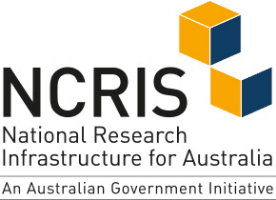One of the great challenges to increasing the sustainability of land management is the need to integrate many different kinds of landscape observation data at many different scales. In a step towards addressing this problem, cyber-infrastructure professionals from a number of the Australian Government’s National Collaborative Research Infrastructure Strategy (NCRIS) program capabilities, including TERN, have joined forces and been awarded funding from the Australian National Data Service (ANDS) to build an online tool called Soils-to-Satellites. Among those involved is Mr Craig Walker, the Director of TERN’s Eco-informatics facility at the University of Adelaide.
‘This one-year project unifies and combines spatial, multi-spectral remote sensing, ecological and genomics data in a single tool to meet the interdisciplinary data needs of scientists studying and managing Australian terrestrial ecosystems,’ says Craig. ‘Soils-to-Satellites will enable data users to analyse and display different types of research data more effectively.’
For the first time, vegetation and genomics data produced by the TREND component of TERN’s Multi-Scale Plot Network (MSPN) will be able to be combined with the rich spatial and biodiversity information from the Atlas of Living Australia (ALA). These TREND data will be supported by and provided from TERN’s ÆKOS data repository.
The Soils-to-Satellites tool will enable researchers to explore and display relationships between disconnected datasets in ways that were not previously possible. For example, they will be able to display ’layers’ of Australian environmental data such as elevation, temperature or soil type, then ‘drill down’ to compare vegetation and genomics data across those layers, and perform subsequent analyses across the combined datasets. Source datasets in the tool and complex analytical data products created and extracted through the tool will be described in ANDS’ research data discovery service, Research Data Australia, for researchers to discover and re-use.
The Program Manager of the Atlas of Living Australia, Mr Peter Doherty, said the Soils-to-Satellites tool would re-use and extend the existing infrastructure and functionality provided by the ALA’s open infrastructure and AEKOS.
‘Thanks to support from ANDS and DIISRTE, this project is a great example of adding value to Australia’s investment in e-research assets,’ says Peter. ‘We are pleased to be collaborating with the leading national research capabilities of the National Collaborative Research Infrastructure Strategy for terrestrial ecosystems to build the Soils-to-Satellites tool. Both teams are looking forward to combining our collective data infrastructure expertise and make ecosystem science even more productive and effective.’
For more information, please email Peter Doherty or Eco-informatics Technical Manager Mr Martin Pullan. This project is supported by the Australian National Data Service, which is supported by the Australian Government through the National Collaborative Research Infrastructure Strategy Program and the Education Investment Fund (EIF) Super Science Initiative.

With the Soils-to-Satellites tool, for the first time,
researchers will be able to combine sophisticated
ecological and genomics data for the same location.
(IBRA, elevation and percentage clay layers from ALA,
TREND plot layer derived with Google Earth, and
genomic samples are an illustration of how the
different data may come together.)
Published in TERN e-Newsletter August 2012






